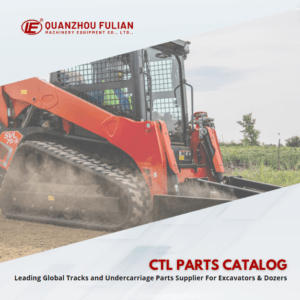
The idler of a heavy excavator plays a crucial role in maintaining proper track tension and guiding the track along the undercarriage. However, there are instances where the idler can come off, leading to significant downtime and maintenance issues. Understanding the reasons behind this problem is essential for operators and maintenance personnel to prevent and address these issues effectively.
Common Causes of Idler Detachment
- Improper Track Tension: One of the primary reasons an idler may come off is incorrect track tension. If the track is too loose, it can slip off the idler and other components of the undercarriage. Conversely, if the track is too tight, it can put excessive strain on the idler, leading to premature wear and potential detachment.
- Wear and Tear: Like all mechanical components, idlers are subject to wear and tear. Over time, the bearings, seals, and other internal parts can degrade, reducing the idler’s ability to stay properly aligned and secure. Regular inspection and maintenance are crucial to identify and replace worn components before they lead to failure.
- Impact Damage: Excavators often operate in harsh environments where they can encounter debris, rocks, or other obstacles. An impact with a hard object can damage the idler or its mounting points, causing it to come loose or dislodge entirely. Operators should be cautious and aware of their surroundings to minimize the risk of impact damage.
- Undercarriage Misalignment: The alignment of the undercarriage components, including the idler, is vital for smooth operation. Misalignment can occur due to improper installation, wear, or damage to other undercarriage parts. This misalignment can cause the idler to come off, especially under heavy loads or in uneven terrain.
- Inadequate Maintenance: Regular maintenance is crucial to the longevity and performance of excavator idlers. Neglecting maintenance tasks such as greasing, adjusting track tension, and inspecting for wear can lead to the idler coming off. Maintenance should follow the manufacturer’s recommendations and schedules.
- Manufacturing Defects: Though less common, manufacturing defects can also lead to idler detachment. Defects in the materials, design, or assembly of the idler can compromise its structural integrity. It is important to use high-quality, OEM (Original Equipment Manufacturer) parts to minimize this risk.
- Operational Overloads: Heavy-duty excavators are designed to handle significant loads, but operating them beyond their intended capacity can lead to undue stress on all components, including the idler. Overloading the machine can cause the track to exert excessive force on the idler, potentially leading to its dislodgement.
Preventive Measures
To prevent idler detachment, operators and maintenance teams should adhere to several key practices:
- Regular Inspections: Conduct routine inspections of the undercarriage and idler for signs of wear, damage, or misalignment.
- Proper Track Tension: Maintain the correct track tension according to the manufacturer’s specifications.
- Quality Parts: Use high-quality replacement parts and ensure proper installation.
- Operational Best Practices: Avoid overloading the excavator and be mindful of operating conditions that could lead to impact damage.
Conclusion
The detachment of a heavy excavator idler can result from various factors, including improper track tension, wear and tear, impact damage, undercarriage misalignment, inadequate maintenance, manufacturing defects, and operational overloads. Understanding these causes and implementing preventive measures can help maintain the excavator’s performance and minimize downtime.
Fulian Operation Team
2024.8.24







